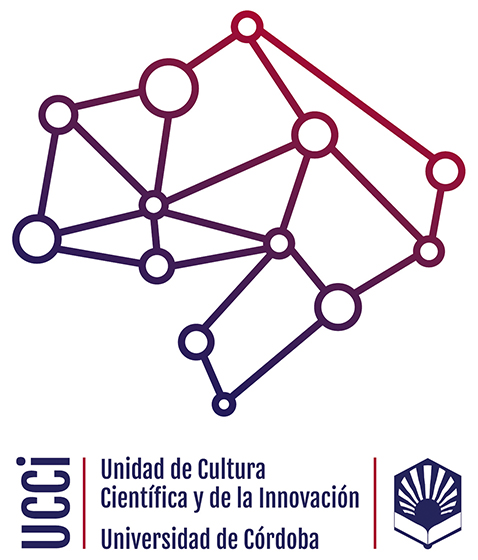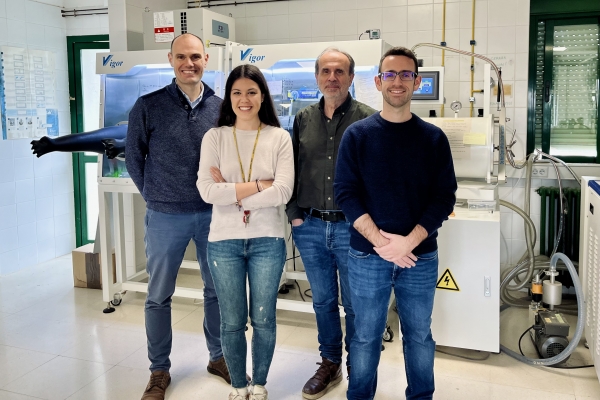As part of the European Sunrey project, a team of researchers from the University of Córdoba (UCO) is working to make solar panel manufacturing cheaper and more accessible.
The energy transition is advancing, and with it, the demand for renewable energies. In the European Union, solar and wind energy generated more electricity than all fossil fuels (gas and coal) combined during the first half of 2024 and, in Spain, renewable energy already covers more than half of the demand. In fact, the generation of photovoltaic energy even briefly surpassed nuclear power.
However, most photovoltaic panels on the market still rely on metallic silicon, a highly sought-after semiconductor that is difficult to obtain and carries a significant carbon footprint. Furthermore, silicon is on the EU’s list of critical raw materials due to its high economic importance and the significant risk of supply disruptions.
As an alternative, the photovoltaic industry has been working for years to create solar panels from perovskite cells, a technology that does not require silicon and can convert solar energy into electricity with an efficiency comparable to that of silicon cells.
Despite their potential, the current instability and toxicity of perovskite cells remain major hurdles to bringing these devices to market.
To address these challenges, a European consortium composed of universities, research centers, and companies is exploring different approaches to overcome these limitations and make the technology market-competitive.
Gustavo de Miguel Rojas, a researcher in the Department of Physical Chemistry and Applied Thermodynamics at the University of Córdoba and Instituto Químico para la Energía y el Medioambiente (IQUEMA), is participating in the project, working with new types of perovskite to improve the safety and efficiency of these materials under laboratory conditions.
One of the main goals is to replace the lead in perovskite cells — which is toxic and polluting — with other affordable and readily available materials like tin, without compromising the stability and efficiency of the devices.
Another goal is to improve the lifespan of perovskite cells, which currently only last about 200 hours, compared to silicon devices that can last up to 25 years.
The UCO team has managed to significantly increase the lifespan by using a new two-dimensional design that combines 2D and 3D structures.
"We have achieved reasonable efficiencies and improved stability," says Gustavo de Miguel, "but still not at the scale of silicon," he clarifies.
Under laboratory conditions, the researchers have extended the lifespan of perovskite devices to around 1,000 to 2,000 hours (three to four months).
To make the leap to the market, the project's commercial partners are working on an encapsulation system to protect perovskite cells and prevent them from degrading. This solution could be key to overcome the lifespan limitations of these devices.
Solar-powered phones and low-cost local manufacturing: the promising future of perovskite cells
If their safety and stability can be improved, perovskite photovoltaic devices offer a promising future.
On one hand, they are much lighter than conventional solar panels, making them suitable for small electronic devices like phones or laptops. Additionally, manufacturing perovskite devices is relatively simple and does not require expensive, highly sought-after materials like silicon.
"It doesn't require large factories," explains De Miguel. "We manufacture them here [in the lab], and scaling up to industrial production wouldn't be much more complicated," the UCO researcher adds.
This could open up the solar panel market to countries that currently cannot compete with China, the world’s largest producer of photovoltaic panels. "It could democratize solar device manufacturing," says the researcher.
This presents an opportunity for countries like Spain, where the demand for solar panels is high, but it is not possible to produce them in a way that is competitive or profitable enough. Local production would also reduce Europe's dependence on the Chinese market, lowering device prices and facilitating the energy transition across the European Union.
To explore these advantages and potential applications, the research groups involved will wrap up the project by developing a business plan that includes guidelines and recommendations for partner companies to evaluate the technology and decide whether it is ready to move to the next level.
This report is included in the activities carried out in the project "Desarrollo de redes de asesoramiento y gestión de proyectos europeos I+D+i en la UCO" with acronym "DevelOPE", within the framework of grant GPE2023-001243-P financed by MICIU/AEI/10.13039/50110001103.


